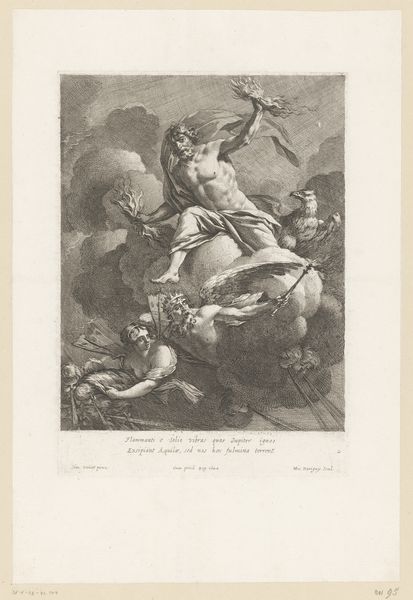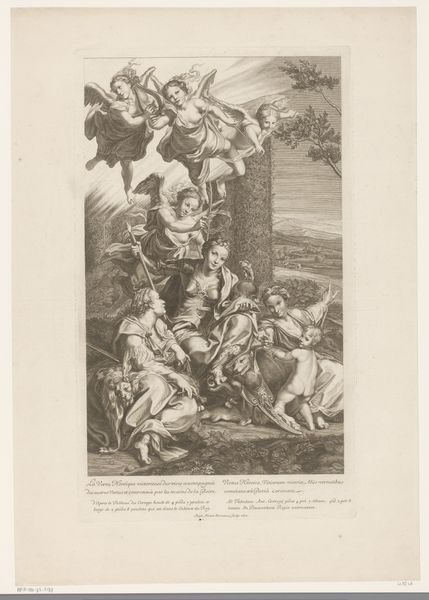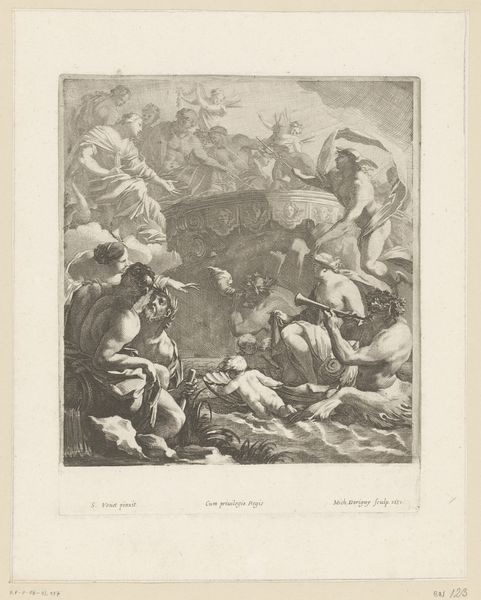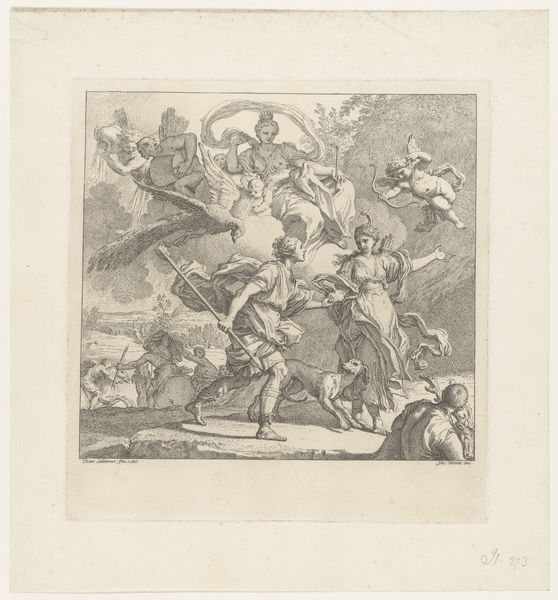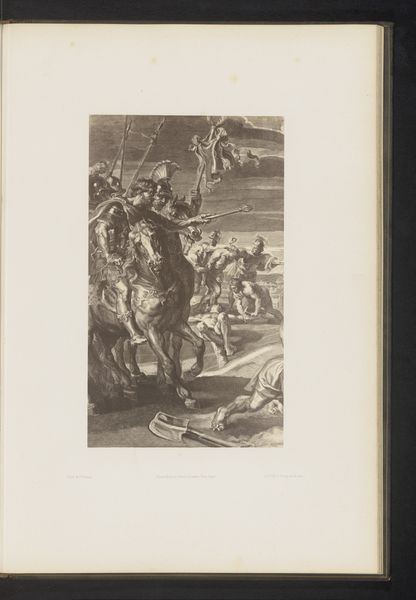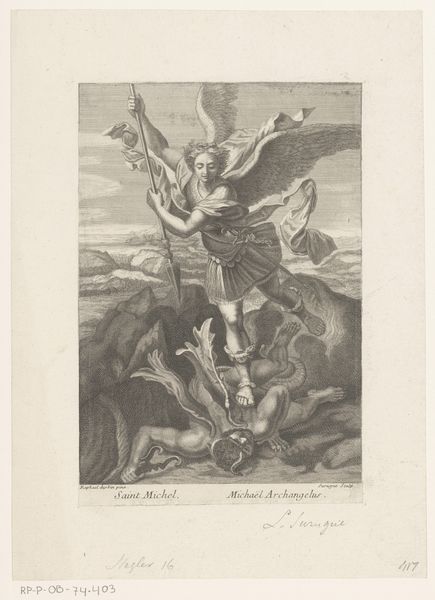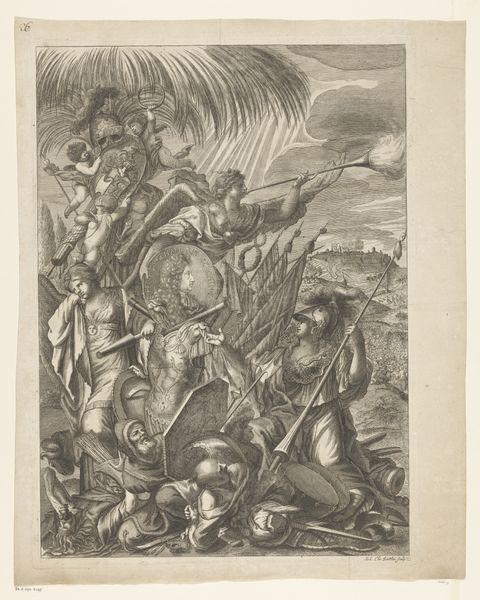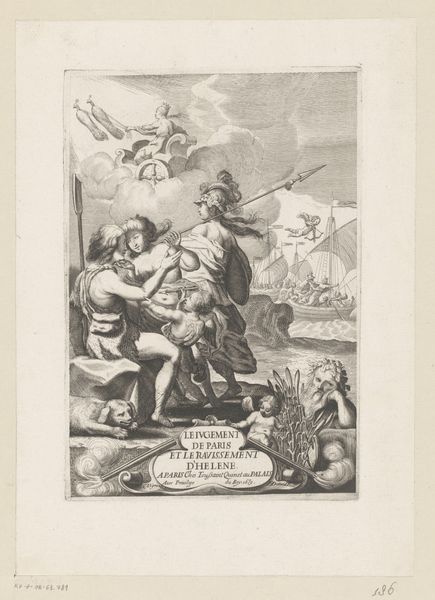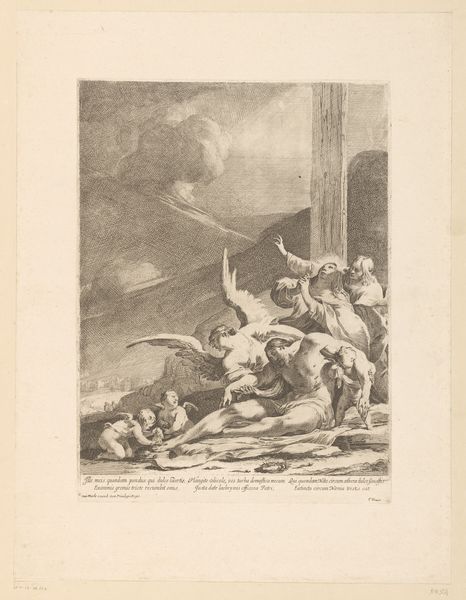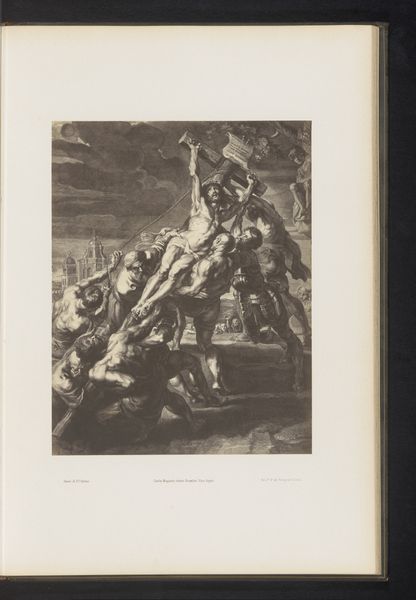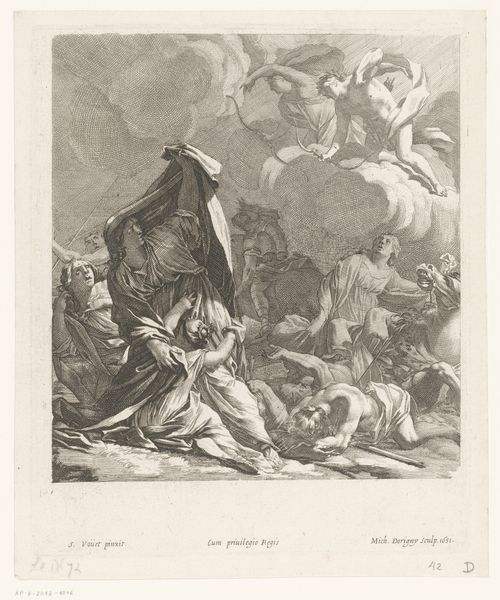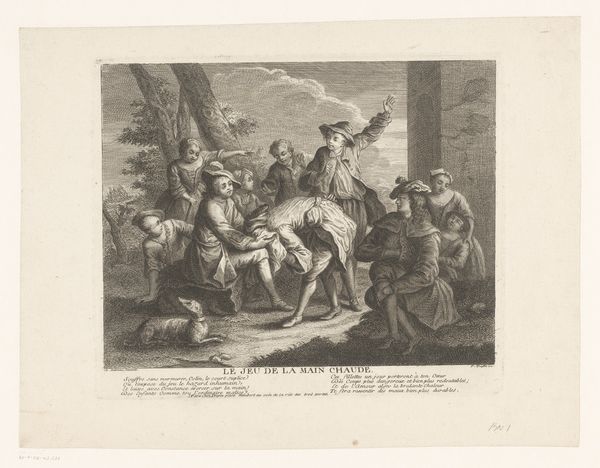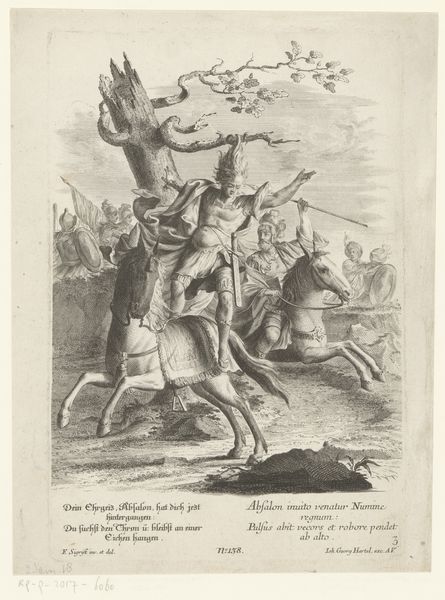
engraving
#
baroque
#
greek-and-roman-art
#
old engraving style
#
figuration
#
line
#
history-painting
#
engraving
Dimensions: height 288 mm, width 207 mm
Copyright: Rijks Museum: Open Domain
Editor: This is "Neptunus en Amphitrite" by Michel Dorigny, made in 1644. It's an engraving, and the scene is quite lively – Neptune with his trident, a sea chariot, and various figures frolicking in the water. It strikes me as a very Baroque celebration of power and mythology. What do you see in this piece? Curator: Immediately, I'm drawn to the trident. It’s not just a weapon; it’s a scepter. Think of it as a visual assertion of dominion over the seas, echoing symbols of power throughout history. And look how Dorigny positions Amphitrite – nestled amongst sea creatures, almost becoming one with the marine environment. How does this interplay between human and elemental worlds resonate with you? Editor: I guess it’s about power – Neptune’s power over the sea and Amphitrite’s connection to it. Is there something more subtle, maybe in the way the figures interact? Curator: Absolutely. Consider the pairing of Neptune, forceful and upright, with the receptive, embracing figures surrounding Amphitrite. There's a dance of masculine and feminine principles at play here, a very common theme explored within the Baroque period. Can you see how these gendered archetypes, carried forward from antiquity, are subtly embedded within the image? And does the artist's technique reinforce this reading? Editor: I think so. The sharp lines used for Neptune give him a strong presence, while the softer shading around Amphitrite makes her seem gentler. Curator: Precisely! Dorigny employs the visual language of his time to tap into a much older system of symbolic thought, preserving cultural memories of classical mythology. These choices – trident, watery embrace, dynamic composition – invite us to consider how symbols continue to shape and reinforce meaning across generations. Editor: That's fascinating. I never thought about the gendering of the imagery like that, but now I see it everywhere! Thanks for pointing that out. Curator: My pleasure. Hopefully you now have a few new lenses for understanding historical and cultural values when approaching images such as this.
Comments
No comments
Be the first to comment and join the conversation on the ultimate creative platform.
